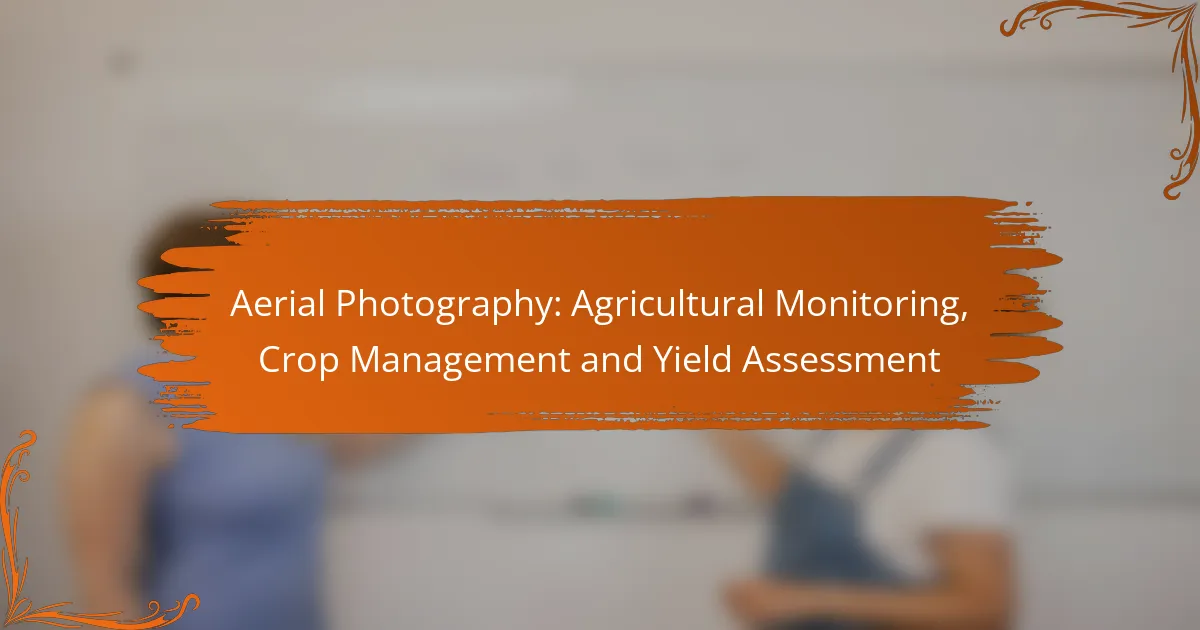Aerial photography plays a crucial role in modern agriculture by offering high-resolution imagery that enhances monitoring, crop management, and yield assessment. By utilizing drones equipped with advanced cameras, farmers can efficiently evaluate crop conditions, make informed decisions, and implement timely interventions, ultimately leading to improved yields and resource management.
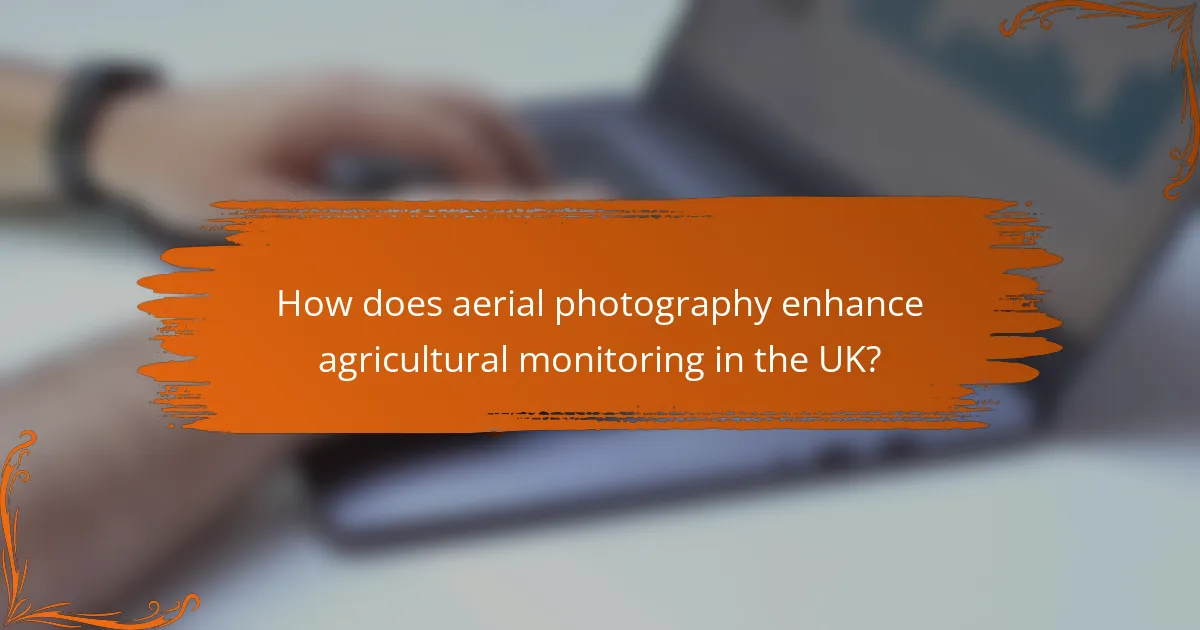
How does aerial photography enhance agricultural monitoring in the UK?
Aerial photography significantly improves agricultural monitoring in the UK by providing high-resolution images that allow farmers to assess crop conditions and land use efficiently. This technology enables timely interventions, leading to better crop management and enhanced yields.
Real-time data collection
Aerial photography facilitates real-time data collection, allowing farmers to capture images of their fields frequently. This immediacy helps in identifying issues such as pest infestations or water stress before they escalate, enabling prompt action.
Farmers can use drones equipped with cameras to cover large areas quickly, gathering data that can be analyzed for actionable insights. This method reduces the time spent on manual inspections, which can be labor-intensive and less efficient.
Improved crop health assessment
With aerial photography, farmers can conduct detailed crop health assessments by analyzing the color and texture of plants from above. Variations in plant color can indicate nutrient deficiencies or disease, allowing for targeted interventions.
Using indices like the Normalized Difference Vegetation Index (NDVI), aerial images can quantify crop health, helping farmers make informed decisions about fertilization and pest control. Regular monitoring can lead to healthier crops and potentially higher yields.
Precision irrigation management
Aerial photography plays a crucial role in precision irrigation management by identifying areas of a field that require more or less water. By analyzing moisture levels and crop health from the air, farmers can optimize their irrigation practices.
This targeted approach can lead to significant water savings and improved crop performance. For instance, farmers can use the data to adjust irrigation schedules based on real-time conditions, ensuring that water resources are used efficiently and sustainably.
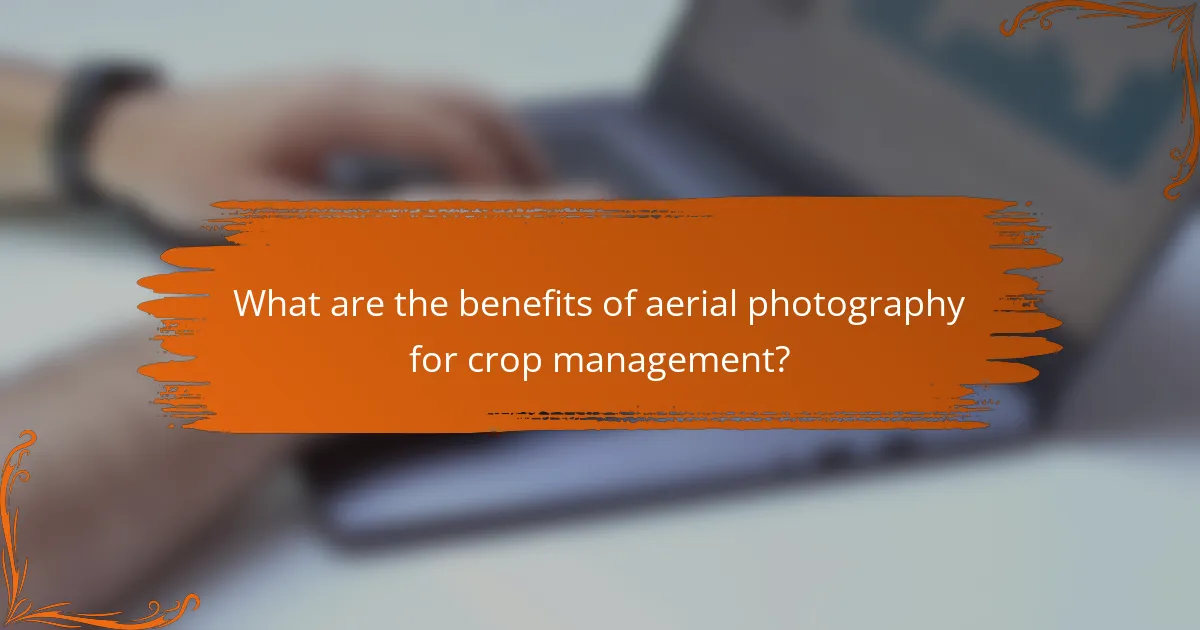
What are the benefits of aerial photography for crop management?
Aerial photography significantly enhances crop management by providing detailed insights into field conditions, enabling farmers to make informed decisions. This technology allows for precise monitoring of crops, leading to improved yield predictions and resource management.
Increased yield prediction accuracy
Aerial photography improves yield prediction accuracy by capturing high-resolution images that reveal crop health and growth patterns. Farmers can analyze these images to identify areas of stress or underperformance, allowing for timely interventions.
Utilizing aerial imagery, farmers can estimate yields more reliably by comparing historical data with current crop conditions. This approach can lead to yield predictions that are often within a few percentage points of actual outcomes.
Cost-effective resource allocation
By using aerial photography, farmers can allocate resources more effectively, reducing waste and optimizing inputs like water, fertilizers, and pesticides. This technology enables precise mapping of crop needs, ensuring that resources are applied only where necessary.
For instance, farmers can use aerial data to identify areas that require more irrigation or specific nutrients, potentially saving thousands of dollars annually. This targeted approach not only cuts costs but also promotes sustainable farming practices.
Enhanced pest and disease detection
Aerial photography enhances pest and disease detection by allowing farmers to monitor their fields from above, spotting issues before they escalate. Early identification of infestations or infections can lead to quicker, more effective responses, minimizing crop loss.
Regular aerial surveys can reveal patterns of pest activity or disease spread, enabling farmers to implement targeted treatments. This proactive strategy can significantly reduce the need for broad-spectrum pesticide applications, promoting environmental health and reducing costs.
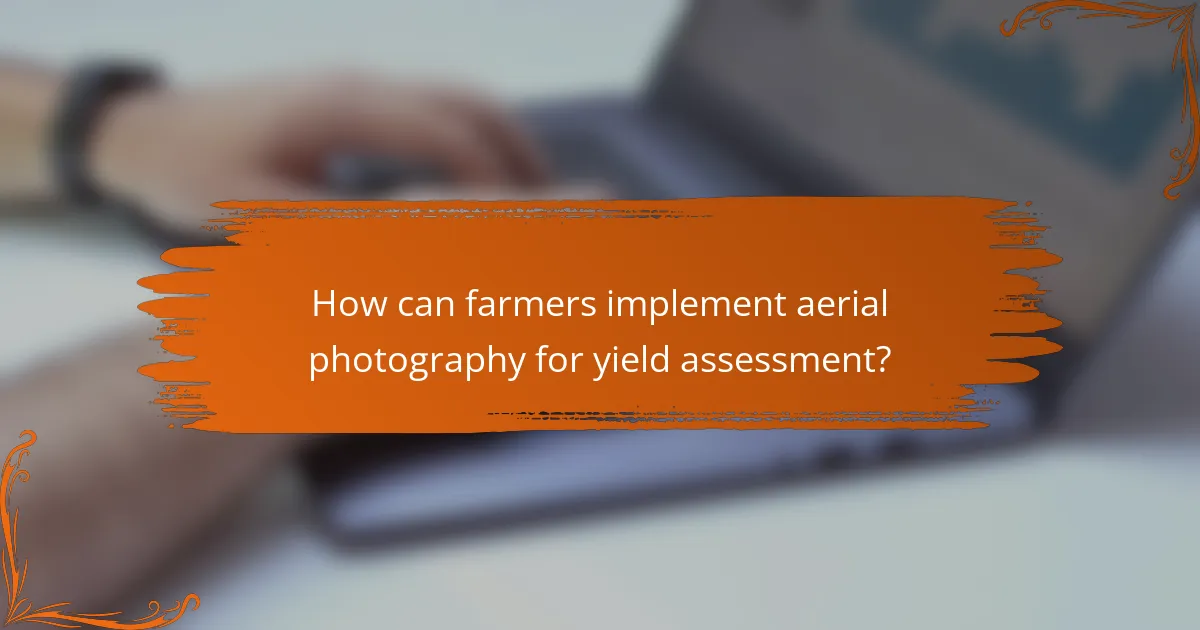
How can farmers implement aerial photography for yield assessment?
Farmers can implement aerial photography for yield assessment by utilizing drones equipped with high-resolution cameras to capture detailed images of their fields. This technology enables them to monitor crop health, identify issues, and estimate yields more accurately than traditional methods.
Choosing the right drone technology
Selecting the appropriate drone technology is crucial for effective yield assessment. Farmers should consider drones with high-resolution cameras and multispectral sensors, which can capture various wavelengths of light to assess plant health. Popular models include the DJI Phantom 4 RTK and the Parrot Bluegrass, both known for their reliability in agricultural applications.
Additionally, farmers should evaluate flight time and range, as drones with longer battery life and extended operational distances can cover larger fields in a single flight. A drone with a flight time of around 25-30 minutes is generally sufficient for small to medium-sized farms.
Integrating software for data analysis
After capturing aerial images, integrating software for data analysis is essential to interpret the data effectively. Programs like Pix4D and DroneDeploy can process images to create detailed maps and models, allowing farmers to visualize crop health and identify areas needing attention.
Farmers should look for software that offers user-friendly interfaces and compatibility with their drone models. Many platforms provide features such as yield prediction and health indexing, which can help farmers make informed decisions about crop management.
Training staff for effective use
Training staff to operate drones and analyze data is vital for successful implementation. Farmers should invest in training programs that cover drone operation, safety regulations, and data interpretation. This ensures that staff can maximize the benefits of aerial photography for yield assessment.
Additionally, hands-on training sessions can help staff become familiar with the technology and software. Encouraging continuous education and staying updated on advancements in drone technology can further enhance their skills and effectiveness in the field.
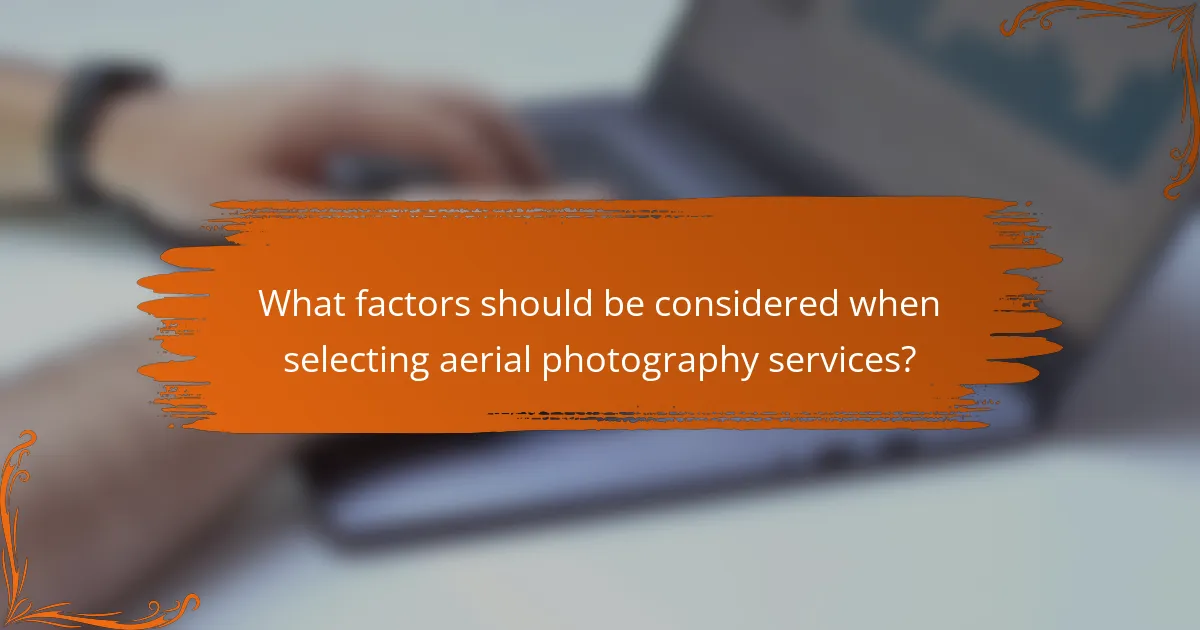
What factors should be considered when selecting aerial photography services?
When selecting aerial photography services for agricultural monitoring, crop management, and yield assessment, consider the provider’s expertise, pricing models, and technology compatibility. These factors will significantly influence the quality and effectiveness of the aerial imagery you receive.
Service provider expertise
The expertise of the service provider is crucial in ensuring high-quality aerial photography. Look for companies with experience in agricultural applications, as they will better understand the specific needs of crop monitoring and yield assessment.
Evaluate their portfolio and client testimonials to gauge their proficiency. A knowledgeable provider will also be familiar with agricultural regulations and standards relevant to your region, ensuring compliance and optimal results.
Cost and pricing models
Cost is a significant factor when selecting aerial photography services. Pricing models can vary widely, from per-acre charges to flat fees for specific services. Understanding these models will help you budget effectively.
Consider the overall value rather than just the lowest price. A higher initial investment might yield better data quality and insights, ultimately leading to improved crop management and yield outcomes.
Technology compatibility
Ensure that the aerial photography technology used by the service provider is compatible with your existing systems. This includes software for data analysis and integration with farm management platforms.
Check if the provider uses drones, satellites, or manned aircraft, as each has different capabilities and costs. Understanding these technologies will help you choose the right service for your specific agricultural needs.

How does aerial photography compare to traditional crop monitoring methods?
Aerial photography offers a faster and often more detailed approach to crop monitoring compared to traditional methods like ground surveys. While ground monitoring can be time-consuming and limited in scope, aerial imagery provides a broader view and quicker insights into crop health and management.
Speed of data acquisition
Aerial photography significantly reduces the time required for data collection. Unlike traditional methods that may take days or weeks to gather information across large fields, aerial surveys can be completed in a matter of hours. This rapid data acquisition allows farmers to respond quickly to emerging issues, such as pest infestations or irrigation needs.
For instance, using drones or aircraft equipped with cameras, farmers can cover extensive areas in low single-digit minutes, enabling timely interventions that can enhance crop yields. This efficiency is particularly beneficial during critical growth stages when timely decisions are essential.
Level of detail in analysis
The level of detail provided by aerial photography is often superior to that of traditional monitoring techniques. High-resolution images can reveal variations in crop health, soil conditions, and moisture levels that might be missed during ground inspections. This detailed analysis allows for more precise management practices tailored to specific areas of a field.
Farmers can utilize multispectral imaging to assess plant health by analyzing different wavelengths of light reflected by crops. This technology can identify stress factors early, potentially improving yield by tens of percent compared to conventional methods. However, it is important to ensure that the technology used is compatible with local agricultural practices and regulations to maximize its effectiveness.






